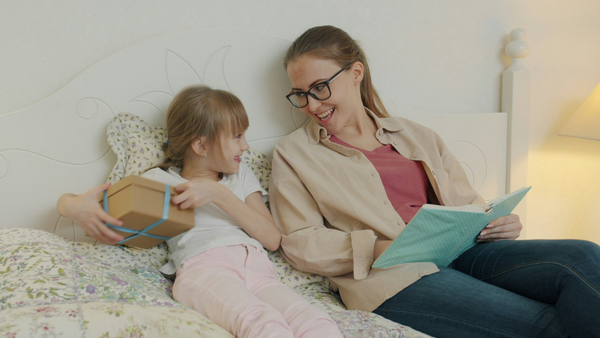By: Rose Lauren, Bened Life Neurodiversity & Disability Specialist
Welcome to your step-by-step guide for before, during, and after travel. This is a two-part series, and we’ll start with pre-trip prep. Click here for a day-of travel guide.
Traveling: leaving the comfort of your perfectly safe surroundings to which you are accustomed to go somewhere different, upending your peace and challenging every sensory need you may have.
Doesn’t sound ideal, does it? But it doesn’t have to be impossible!
The world isn’t built to accommodate us – let’s be real – but hopefully, this blog can give you some insight, inspiration, and comfort if you’re someone with neurodiversity who wants to be able to travel away from home. Or, this may help if you want to help someone else to travel!
Hi, I'm Rose
I am 29. I have diagnosed ADHD and autism, a bunch of physical health issues, aaand a rare disease. I am also someone who’s been obsessed with travel since a very young age, mostly because my family moved around a lot.
I feel a need to see it all. I have an itch that needs scratching, and that usually involves needing to see a new culture and new views, away from my typical day-to-day (and maybe a little bit of escapism from a complex life).
However, for a long time, EVERY time I traveled I'd come back a mess. In fact, I used to think I’d developed some kind of dissociative mode that let me enjoy it somewhat despite the impending doom of meltdowns, exhaustion, and physical repercussions.
It took me a long time to create a calculated routine to help me cope with the before, during, and after of each trip. I have traveled to 28 countries, five states, and four continents – and I’m currently a few days away from my next trip.
How? How can I do that when simply taking the bus direct from my home to my parents’ home can send me spiraling?! How, when a delay of even 10 minutes for the train ruins me for a week?
The answer: PREPARATION.
Let’s look at how you can prepare yourself ahead of an upcoming trip.
Pre-Trip Tips for Neurodivergent Travelers

- Travel with someone. I do not recommend traveling alone if this is your first trip. Consider who you could bring with you to be supportive and understanding. Someone who’s done this before is a good choice.
- Take your time to choose a safe, reputable hotel and airline. Make sure to look at where the hotel is and what’s nearby, using a map tool to see how the area looks. You can look through hotel reviews and even contact the hotel to ask about anything you need. For the airline, check if you need to pay for extra luggage or upgrade your seat. Booking can have a lot of unnecessary pop-ups and extra fees, so please take your time to navigate this!
- Get disability help. After booking, contact your airline and/or airport. Most of them have disability help, or you can ask someone to advocate for you. For example, my airport offers a service that enables me to use a wheelchair from the entry to the gate, a separate security line with less noise, as well as assistance checking bags, going through all the different airport checks, and skipping queues. It also means I get on the plane first and can leave the plane last, avoiding all the rush of humans, noise, and pressure. This relieves me of any excess sensory overload and means I don’t have to queue, which I cannot physically do. Usually, a representative or the person I’m traveling with does all the talking and handling of documents so that I don’t have to try and process thoughts whilst also navigating the noises and other sensory input.
- Research your destination(s). I search the heck out of the location. Use social media, Google, and friends to get all the intel you want, and print it all out if you want. Make sure you have a visual imprint in your mind of what the hotel looks like, local street views, and a local landmark like a cafe or restaurant just to familiarize yourself ahead of leaving.
- Taxi!! Book any taxis or airport transfers from home to the airport, airport to hotel, and vice versa. Or ask someone to help with this.
- Make back-up plans. Take some time to prepare yourself mentally and think of exit plans if things don't go to plan. You must be aware that traveling often comes with risks. If you are not flying directly to your destination, there will be some time between the connecting flights. This usually means any checked baggage is passed right onto that next flight for you. If your first flight is delayed or canceled this can result in issues with your second flight. This may lead to rebookings and other disruptions. I suggest writing down the details of your flights and hotels, numbers to call, and the details of a parent, carer, or friend who can guide you through this, just in case. Make sure to have paper versions of everything, including phone numbers, just in case you don’t have service or your phone dies.
- Lists. Write it all down. Leave no thought unwritten. I write a list of what to pack, emergency lists, and more. I write a walk-through for the day of travel down to the minute. I write a list of what to do the day before. Check the electrics. All lights off. Then I write a final checklist for after packing: passport, IDs, chargers, spare cash hidden somewhere safe, list of contact numbers, etc.
- Health insurance! Do you need this where you’re going? Make sure to print the documents to take with you too.
- Pet care. I have a pet. Do you? Make sure your pet is going to be accommodated and write down anything you need to prepare or buy ahead of time for that too.
- Prepare your liquids. Do you have the correct amount of liquids? Your airline will have information online on what you are allowed to bring on the flight or hold luggage. Checked bags usually only have a total weight limit and no limit on liquids. For hand luggage, you are usually limited to 3.4 ounces (100 milliliters) or less per item, and all of your liquids must fit in a clear plastic bag. I know this can be difficult because we want all our usual creams and comforts. Toiletry stores normally have little bottles and jars you can buy that you can put small amounts of all your products in, or you can buy mini versions of what you need. When packing, consider the amount you will need for the duration of your trip and what you actually need for ease of routine and comfort.

- Pack extras. When packing, check the weather of your location. Pack for comfort and familiar items that you’d feel safe with at home that also make sense for where you’re going. Pack all your essentials, like medications and chargers and spare things and passport, into your hand luggage. Bring a few extra pairs of underwear or shirts just in case. Be sure to put all your most important items in your hand luggage, not a checked bag.
- Weigh your bags. Check the weight allowed for your luggage and weigh it. Make sure nothing is over the limit, as you will be charged for this at the airport!
- Final check. I check everything over 20 times. Do you need a visa? Any further documentation? Is your passport valid? Do you need travel adapters for your chargers? Do you need a letter for your medications or anything else from your doctor?
Feeling more prepared?
Good!
In the next post, we’ll discuss what to pack, and how to prepare for the airport itself. I hope this so far has provided as much clarity and detail as possible for your traveling!
Click through to Part 2 here:
https://benedlife.com/blogs/news/an-autistic-person-s-guide-to-travel-airline-style-part-2







